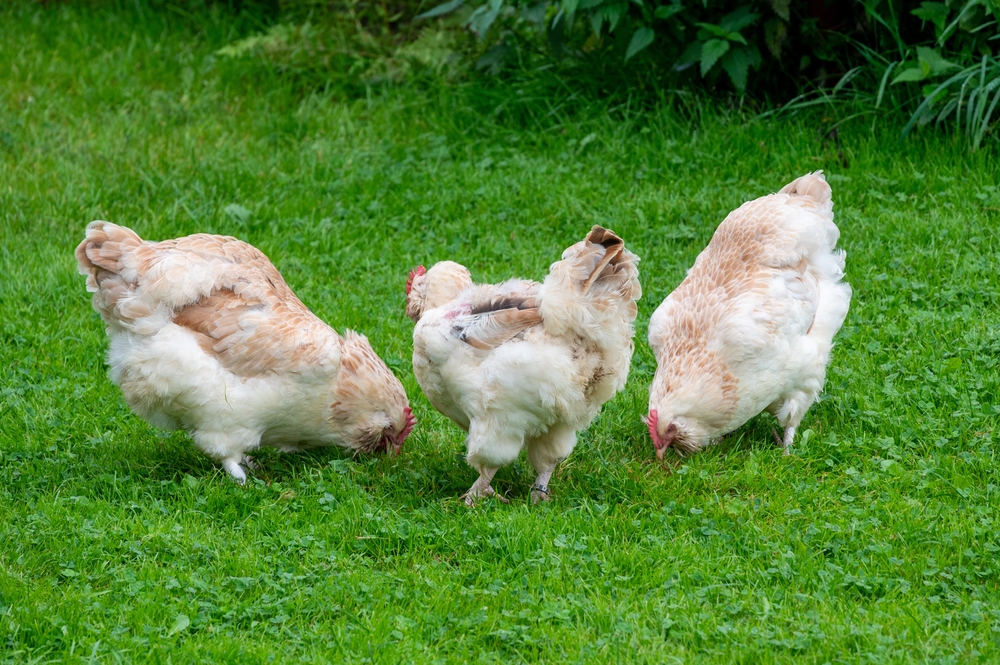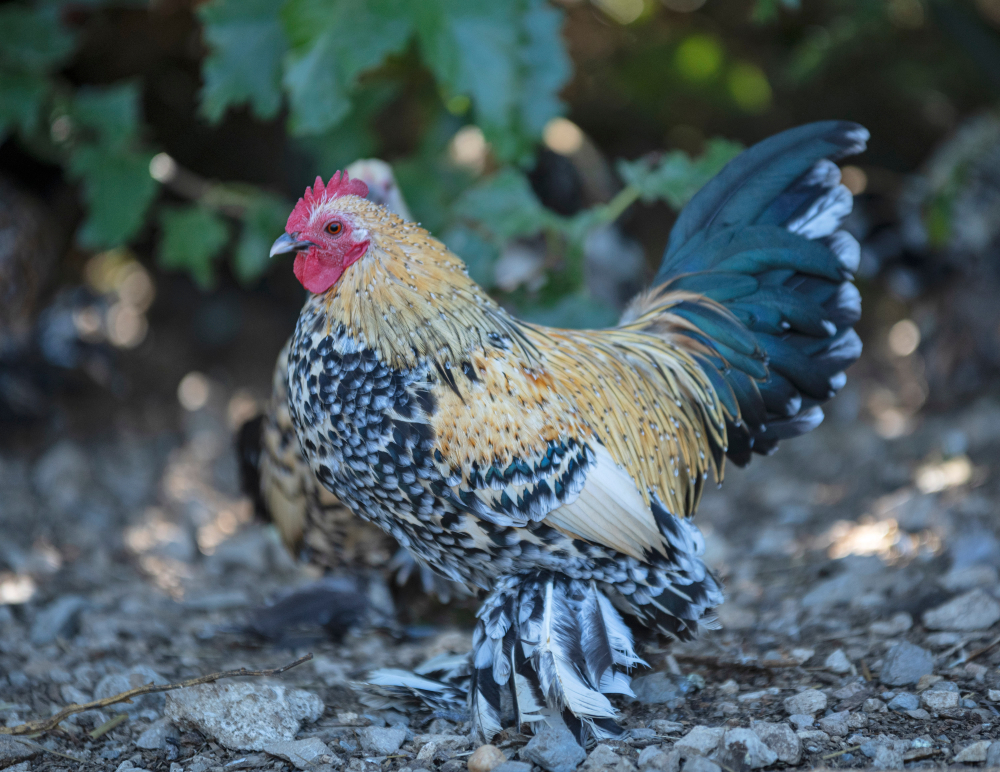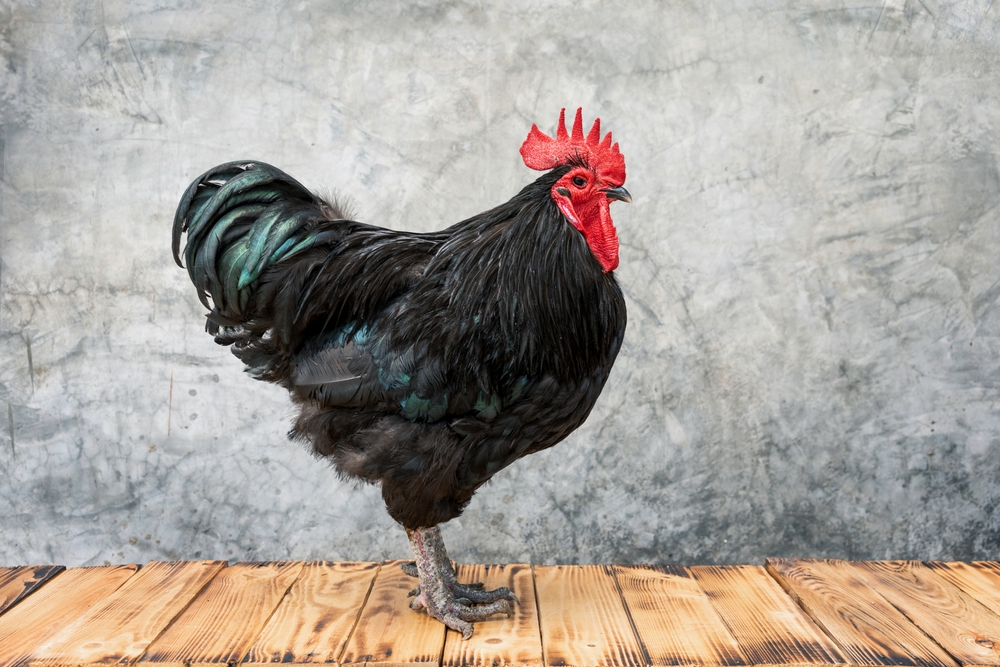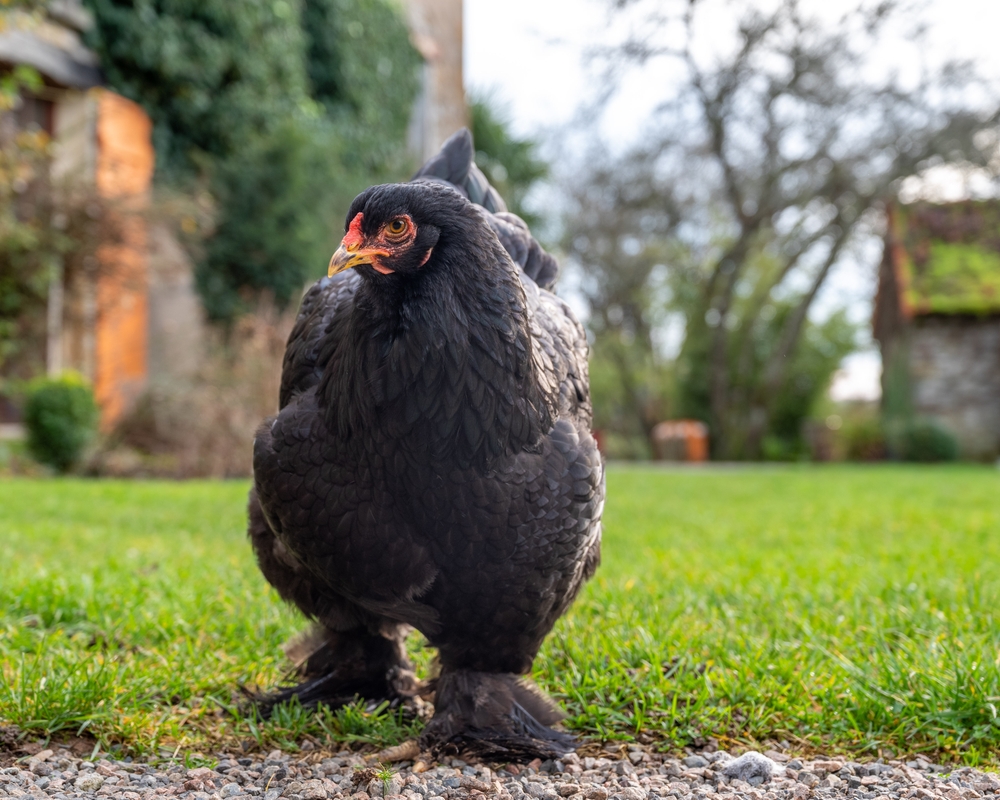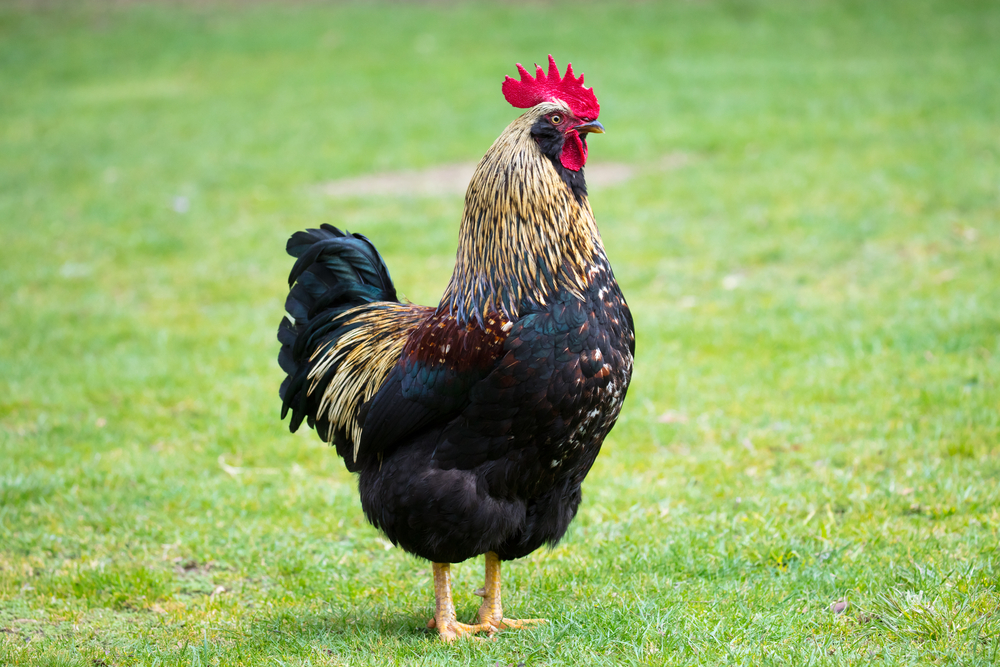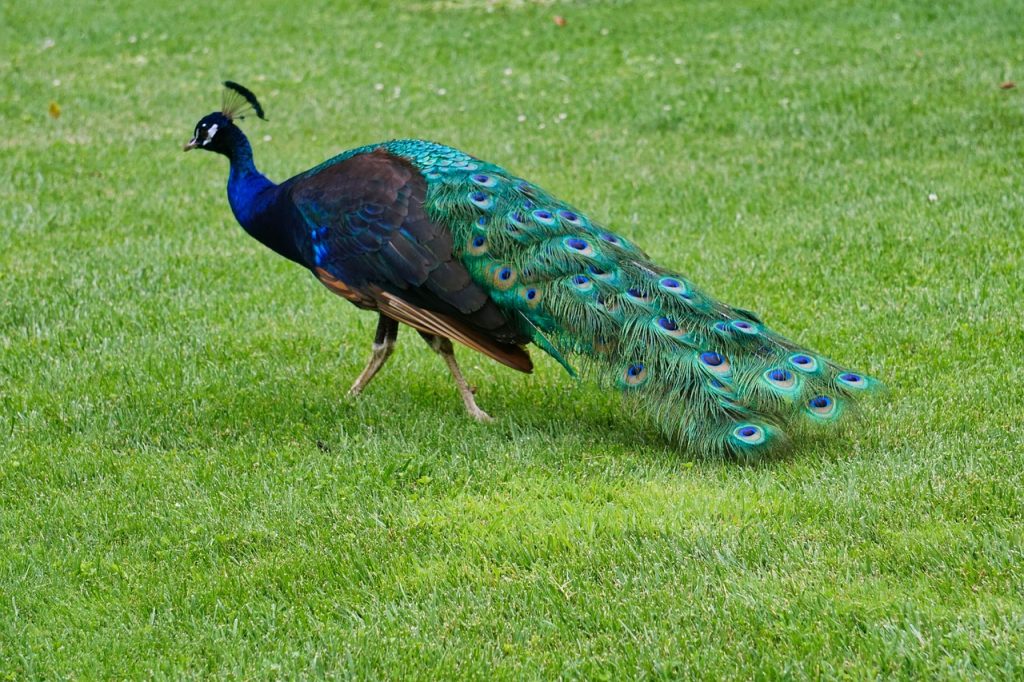Physical Characteristics
Plumage:
Faverolles are known for their soft, fluffy plumage that gives them a rounded, full-bodied appearance. The most popular variety is Salmon, where hens display creamy white to light salmon body feathers with darker salmon on the back and wings, and roosters have striking black beards, breasts, and tails with straw-colored hackles and saddle feathers. Other recognized varieties include white, black, blue, and mahogany.
Head and Comb:
The head is medium-sized with a single, upright comb of five distinct points. Faverolles are notable for their muffs and beard, which cover the sides and front of the face, giving them a distinctive, “fluffy-cheeked” look. The comb, wattles, and earlobes are reddish-pink, and the beak is short and horn-colored to pinkish. Eyes are bay to reddish-brown.
Body:
The body is deep, broad, and rectangular, with a full breast and a slightly upward-tilted stance. Dense feathering makes the bird appear heavier and rounder than it actually is.
Legs and Feet:
Faverolles are unique among most chicken breeds in having five toes on each foot instead of the usual four. The legs are feathered down to the outer toes, with skin color being white or pinkish.
Tail:
The tail is medium length, well-feathered, and carried at a slight upward angle. Roosters have long, arching sickle feathers, while hens’ tails are shorter and more compact.
Size:
-
Male Weight: 8 to 10 lbs (3.6 to 4.5 kg)
-
Female Weight: 6.5 to 8 lbs (3 to 3.6 kg)
-
Bantam Variety: Males around 30 oz (850 g), females around 26 oz (740 g)
Sexual Dimorphism:
Males are larger, with more pronounced coloring in patterned varieties, especially in Salmon. Hens have softer, lighter tones and more rounded body profiles.
The Faverolles’ combination of beard and muffs, five toes, and abundant soft feathering makes it one of the most visually distinctive and charming dual-purpose chicken breeds.



































































